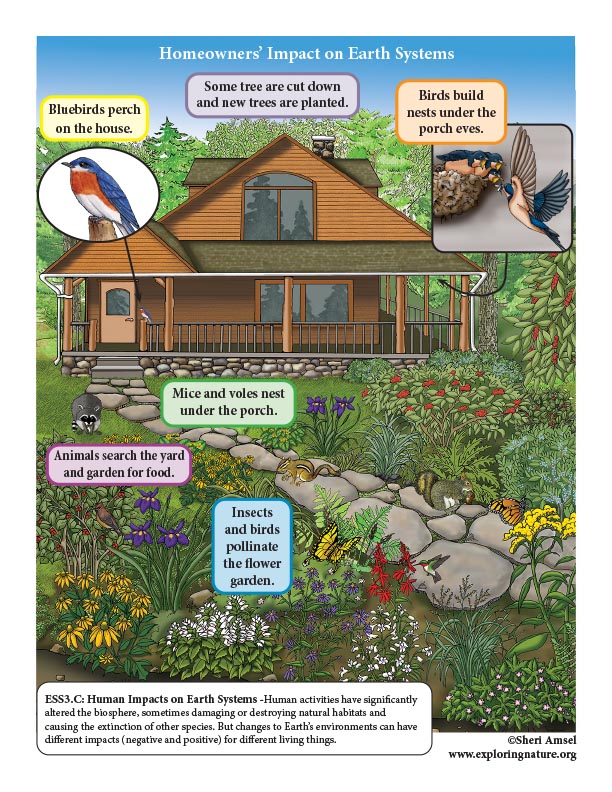

As our world population grows, the amount of resources we use grows with it - not just food, clothing, and other materials, but space for homes and businesses as well. This impacts habitats and the living things that live there. How can we minimize the impact our homes and businesses have on the habitats? Obviously, it would depend where you live and your resources, but it is an interesting exercise to consider. 1) Plant more native species of plants, shrubs and trees in your yard to provide food, cover, and nesting areas for birds and other wildlife.
2) Plant more trees on your property.
3) Plant a butterfly garden.
4) Plant a rain garden to keep the run off from your roof and driveway in your yard and out of waterways.
5) If you do have a lawn, leave the dandelions for the bees.
6) Put up appropriately made bird nesting boxes in your garden.
7) Stop using pesticides and herbicides on lawns and gardens.
8) Birds hitting windows kill millions of birds every year. If your home/office has a lot of large windows, do some research about how to make windows safer to avoid bird collisions.
9) Add a “bird bath” as a water source for wildlife.
10) Leave brush piles in place to shelter wildlife.
11) Leave dead and dying trees or rotting logs in place for wildlife.
12) Compost plant matter from the kitchen and yard waste.
13) Recycle and decrease plastic use.
14) Use sustainable energy sources where available (solar, wind, geothermal).
Draw a diagram of your house (or an imaginary home or business) and the things you could add or change to make it more habitat friendly.
When you research information you must cite the reference. Citing for websites is different from citing from books, magazines and periodicals. The style of citing shown here is from the MLA Style Citations (Modern Language Association).
When citing a WEBSITE the general format is as follows.
Author Last Name, First Name(s). "Title: Subtitle of Part of Web Page, if appropriate." Title: Subtitle: Section of Page if appropriate. Sponsoring/Publishing Agency, If Given. Additional significant descriptive information. Date of Electronic Publication or other Date, such as Last Updated. Day Month Year of access < URL >.
Amsel, Sheri. "Design a Low Impact House and Yard (6-8 Grade NGSS)" Exploring Nature Educational Resource ©2005-2024. December 16, 2024
< http://www.exploringnature.org/db/view/Design-a-Low-Impact-House-and-Yard-6-8-Grade-NGSS >

